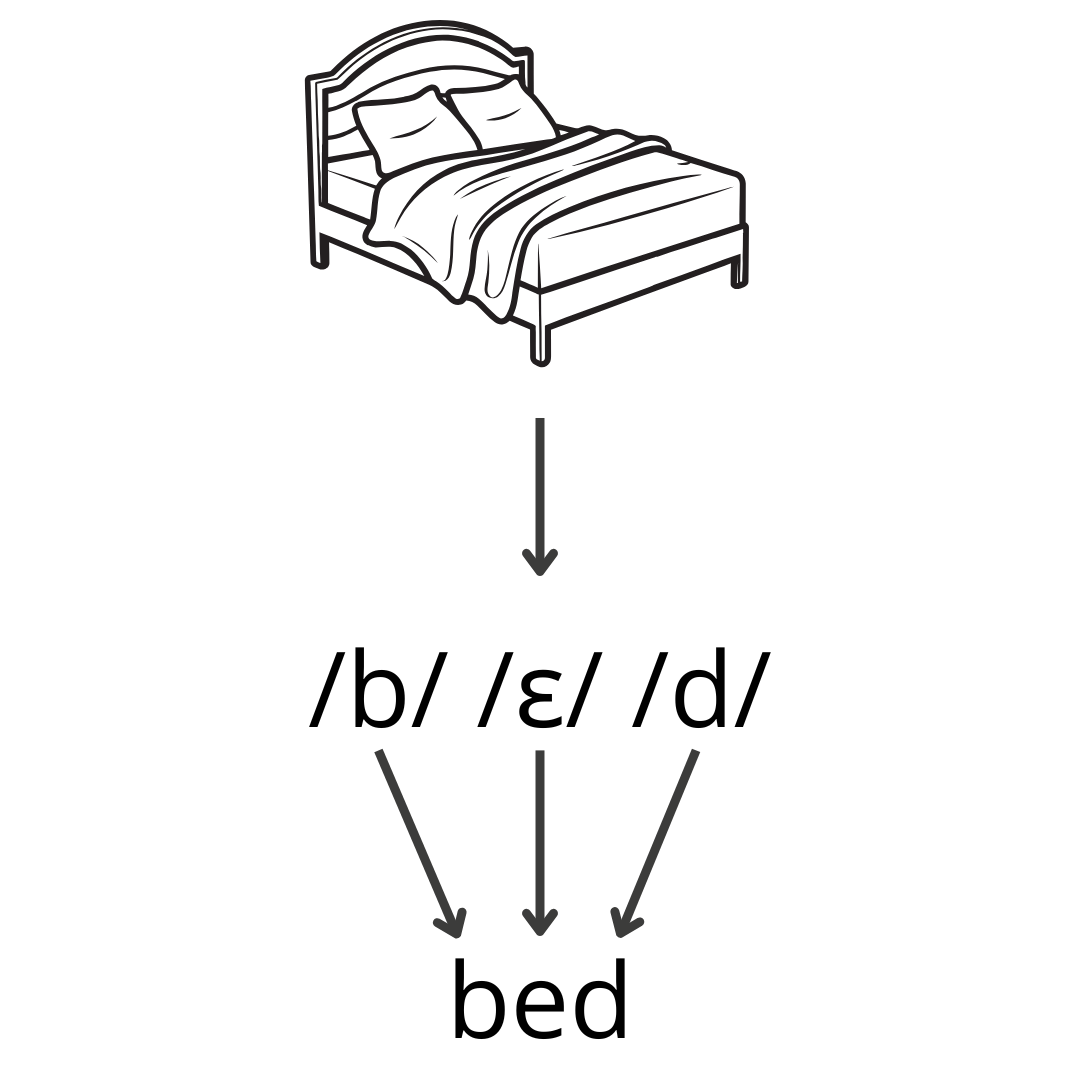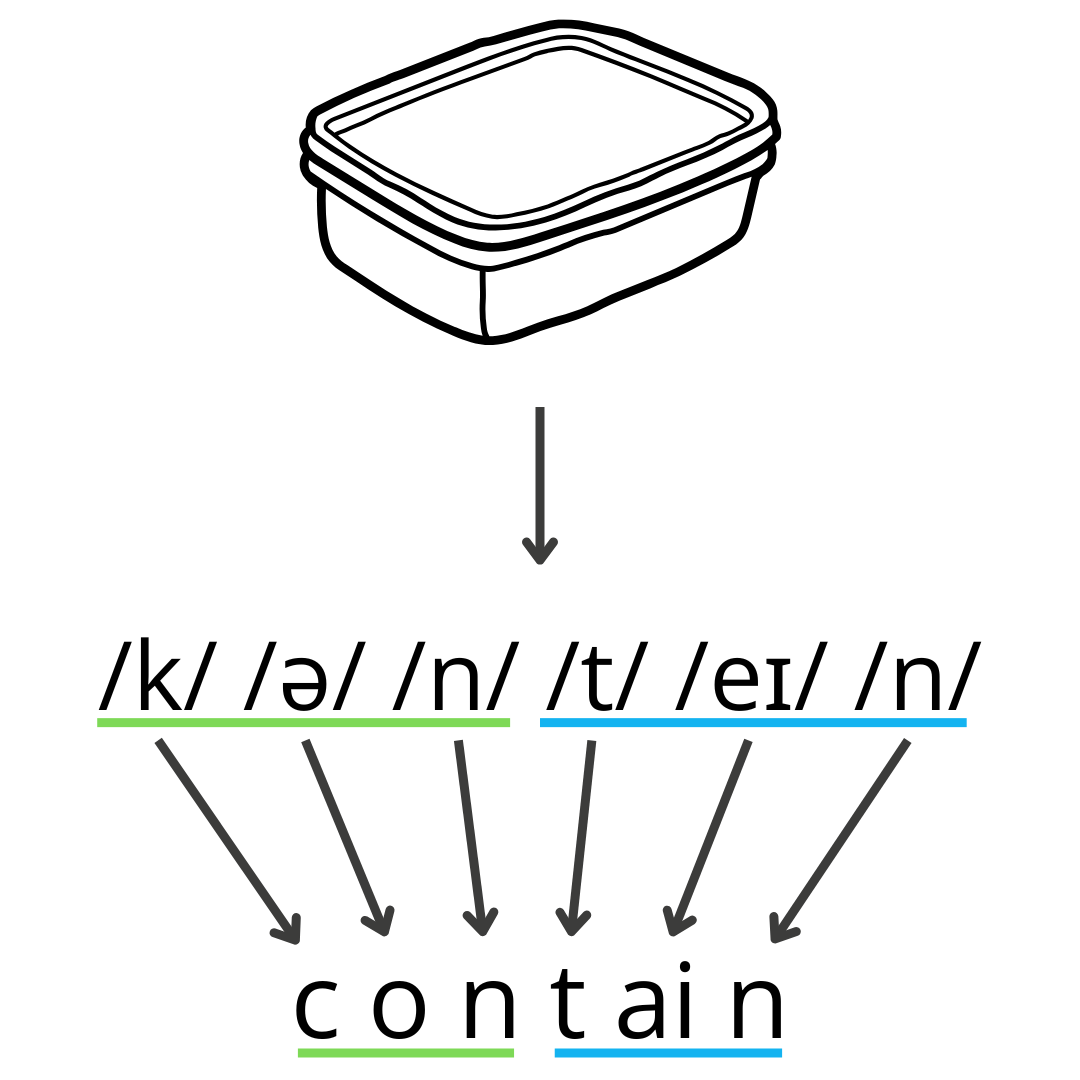Orthographic Mapping
Written by: Brianna Guild, MHSc SLP(C)
Date: April 21, 2025
Did you know that we all learn to read the same way?!
Orthographic mapping is the mental process that all successful readers use to become skilled, fluent readers.
Through the process of orthographic mapping, readers use the oral language processing part of their brain to map the sounds (phonemes) of spoken words to the letters (graphemes) in a written word. Then, they permanently store the connected sounds and letters of words, and the word meaning(s), as instantly recognizable words, which are often described as “sight words”— words readers can instantly and automatically recognize.
This is not the same as simply memorizing how a word looks! Orthographic mapping is the mental process of creating sound-letter connections that link a word’s pronunciation, spelling, and meaning in memory.
Orthographic mapping example with single sound-letter correspondences
When a student knows the spoken word “bed”, its pronunciation and meaning are stored in long-term memory. If the student has good phonemic awareness skills, they can break the word into the sounds /b/ /ɛ/ /d/. They can then map each phoneme to its corresponding grapheme (one letter in this case). This links the known spoken word to the written word bed in memory.
Orthographic mapping example where sounds are represented by multiple letters
The same is true when sounds are represented by more than one letter. For example, when a student knows the spoken word “sheep”, its pronunciation and meaning are stored in long-term memory. If the student has good phonemic awareness skills, they can break the word into the sounds /ʃ/ /i/ /p/. They can then map each phoneme to its corresponding grapheme, and recognize that some of these spellings are written with multiple letters. This links the known spoken word to the written word sheep in memory.
Orthographic mapping example with a polysyllabic word
As reading skills develop with practice, readers form connections between spellings and pronunciations using larger spelling-sound units, such as common syllabic and morphemic spelling units (e.g., root words and affixes). This makes it easier to read longer words, since fewer connections are needed to story the word in memory. For example, to store the word contain in memory, only two grapho-syllabic versus six grapho-phonemic connections are needed (there are six sounds in the word, but only two syllables or chunks). As readers learn and practice more spelling patterns, they improve at reading and spelling words that follow those patterns.
Orthographic mapping is not a skill or activity that can be directly taught, but teaching phonemic awareness and phonics skills can support this process.
Additionally, it is beneficial to integrate these skills within activities to help students connect their oral language knowledge with the new orthographic (print) information. Think of ways to purposefully integrate phonemic awareness, phonics, and vocabulary into activities, such as through word building and word ladders/chains. Another simple and effective activity is having students read a word, spell it, and discuss its meaning.
I hope this helps you better understand the process of orthographic mapping!
Join the SLP Literacy Corner email newsletter to get access to more literacy information and exclusive free resources, including spelling activity templates designed to help support the process of orthographic mapping (includes samples of Elkonin boxes, spell and draw, and say it, move it, spell it). Sign up here!
If you're looking for literacy activities, check these out:
References:
Ehri, L. C. (2013). Orthographic Mapping in the Acquisition of Sight Word Reading, Spelling Memory, and Vocabulary Learning. Scientific Studies of Reading, 18(1), 5–21. https://doi.org/10.1080/10888438.2013.819356
Sedita, J. (2022). The Role of Orthographic Mapping in Learning to Read. Keys to Literacy. https://keystoliteracy.com/blog/the-role-of-orthographic-mapping-in-learning-to-read/









